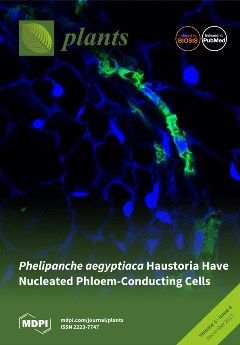1
Department of Pharmaceutical Chemistry, H. N. B. Garhwal (A Central) University, Srinagar Garhwal, Uttarakhand 246174, India
2
High Altitude Plant Physiology Research Centre, H. N. B. Garhwal (A Central) University, Srinagar Garhwal, Uttarakhand 246174, India
3
Scientific Consulting, Chemical Engineering, University of Chemical Technology and Metallurgy (UCTM), Sofia 1734, Bulgaria
4
Department of Biology and Ecology, Faculty of Science, University of Kragujevac, Radoja Domanovića No. 12, Kragujevac 34000, Serbia
5
Department of Pharmacy, Banasthali Vidyapeeth, Rajasthan 304022, India
6
Department of Scientific affairs, Kurks State Agricultural Academy, Kurks 305021, Russia
7
All-Russian Research Institute of Phytopathology, Moscow, Bolshie Vyazemy 143050, Russia
8
Department of Biochemistry, H. N. B. Garhwal (A Central) University, Srinagar Garhwal, Uttarakhand 246174, India
9
Department of Biological Systems Engineering, Bio Product Sciences and Engineering Laboratory (BSEL), Washington State University, 2710 Crimson Way, Richland, WA 99354-1671, USA
10
Laboratoire de Chimie Analytique Appliquée, Matériaux et Environnement (LC2AME), Faculté des Sciences, B.P. 717, Oujda 60000, Morocco
11
UQ Diamantina Institute, Translational Research Institute, Faculty of Medicine, The University of Queensland, 37 Kent Street Woolloongabba, Brisbane, QLD 4102, Australia
12
Department of Food, Nutrition, Dietetics & Health, Kansas State University, Manhattan, KS 66506, USA
add
Show full affiliation list
remove
Hide full affiliation list
Abstract
The in vitro antioxidant potential assay between ethanolic extracts of two species from the genus
Vitex (
Vitex negundo L. and
Vitex trifolia L.) belonging to the Lamiaceae family were evaluated. The antioxidant properties of different extracts prepared from both plant species were
[...] Read more.
The in vitro antioxidant potential assay between ethanolic extracts of two species from the genus
Vitex (
Vitex negundo L. and
Vitex trifolia L.) belonging to the Lamiaceae family were evaluated. The antioxidant properties of different extracts prepared from both plant species were evaluated by different methods. DPPH scavenging, nitric oxide scavenging, and β-carotene-linoleic acid and ferrous ion chelation methods were applied. The antioxidant activities of these two species were compared to standard antioxidants such as butylated hydroxytoluene (BHT), ascorbic acid, and Ethylene diamine tetra acetic acid (EDTA). Both species of
Vitex showed significant antioxidant activity in all of the tested methods. As compared to
V. trifolia L. (60.87–89.99%; 40.0–226.7 μg/mL),
V. negundo has been found to hold higher antioxidant activity (62.6–94.22%; IC
50 = 23.5–208.3 μg/mL) in all assays. In accordance with antioxidant activity, total polyphenol contents in
V. negundo possessed greater phenolic (89.71 mg GAE/g dry weight of extract) and flavonoid content (63.11 mg QE/g dry weight of extract) as compared to that of
V. trifolia (77.20 mg GAE/g and 57.41 mg QE/g dry weight of extract respectively). Our study revealed the significant correlation between the antioxidant activity and total phenolic and flavonoid contents of both plant species.
Full article






